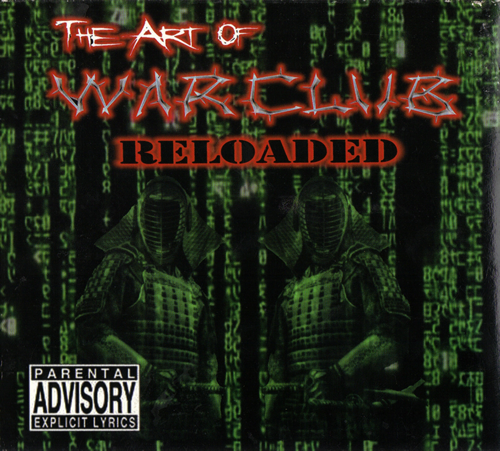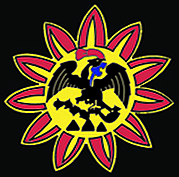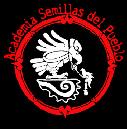The Spanish assault on the Aztec Empire in
1519 represented the second major stage of Spanish expansion in the
Americas. The first stage had established permanent settlements in the
Caribbean Sea, including the city of Santo Domingo (now the capital
of the Dominican Republic) and outposts on the island of Cuba. These
settlements made it possible for the Spaniards to probe the mainland
of Mexico and Central America knowing that they could quickly return
to their island outposts.
The first governor of Cuba, Diego Velázquez, sponsored three
expeditions in the early 1500s that sought to explore the Gulf Coast
of Mexico. The first expedition, commanded by Spanish navigator and
conqueror Francisco Hernández de Córdoba, set sail from
Cuba in 1517 and explored uncharted territory along the Yucatán
Peninsula. When Spanish soldiers went ashore to seek water and food
they were often attacked by Maya warriors. The Spaniards and the Maya
engaged in a major battle in Champóton, now a port in the modern
state of Campeche. More than half the Spanish expedition was killed.
While the expedition ended in failure, it provided the Spaniards with
more detailed knowledge of the native inhabitants of the region and
sparked new interest in Mexico.
In 1518 Governor Velázquez sponsored another expedition, this time under the command of his nephew, Juan de Grijalva. The Spaniards returned to Champóton, where they avenged the defeat of the previous expedition, forcing the Maya to retreat inland after three days of fierce fighting. The expedition continued exploring the Gulf Coast, eventually encountering friendly Mayan-speaking peoples who told the Spaniards of a powerful empire to the west. Although the Spaniards did not realize it, they had reached the outer limits of the Aztec Empire.
The ruler of the Aztec Empire at this time, Montezuma II, had received
reports of the Spanish explorations, as well as the battles at Champóton.
He ordered his subjects along the Gulf Coast to greet the foreigners,
offer them a large feast and gifts of gold and jewelry, and then ask
them to leave the region. Montezuma knew of the Aztec legends and omens
predicting future destruction, and is reported to have wondered whether
the arrival of the Europeans heralded the return of an angry Quetzalcoatl.
Grijalva returned to Cuba and relayed to Governor Velázquez the
tales of a powerful and wealthy Native American empire located in the
interior of Mexico. This news spurred Velázquez to authorize
a third expedition, this time commanded by Hernán Cortés.
As Cortés loaded his ships and recruited additional men in Cuba,
some of his enemies complained that he was a poor choice to lead the
expedition. They convinced Velázquez to cancel Cortés's
commission to lead the force. Cortés ignored the orders and set
sail in February 1519 with about 600 men, as well as a few cannons and
horses. On the Yucatán Peninsula, the expedition rescued a shipwrecked
survivor, Jerónimo de Agúilar, who had been held captive
by the Maya for eight years. Upon meeting the Spaniards, Aguilar refused
to go with them explaining that he preferred to remain with the Maya.
The Spaniards nonetheless forced him to join their expedition and he
would provide them with a valuable translator of the Mayan language.
The expedition sailed west along the Yucatán Peninsula and the
Gulf Coast, engaging in a major battle against Tabascan warriors at
the mouth of the Grijalva River. Cortés quickly realized the
value of horses in battling the Native American peoples-the Tabascans
had never seen horses and many fled in fear. The expedition sailed north
in search of a good harbor and established a town, La Villa Rica de
la Vera Cruz, at what is now the city of Veracruz. Cortés organized
an independent government, renounced the authority of Governor Velázquez,
and acknowledged only the supreme authority of the Spanish Crown. In
order to prevent any of his men from deserting because of these actions,
Cortés destroyed his fleet.
When Cortés started to march inland he had about 500 men remaining.
The Spaniards soon encountered the Tlaxcalan people, who lived east
of the Aztec Empire and resented Aztec domination. Despite this resentment,
the Tlaxcalans initially battled the Spanish invaders. After two weeks
of fighting and heavy native losses, the Tlaxcalans surrendered and
became allies of the Spaniards against the Aztecs. Until the conquest
was achieved in 1521, the Tlaxcalans were important allies of the Spaniards
and helped create a combined European/Native American army that numbered
in the thousands.
In October 1519 the Spaniards and several thousand of their Tlaxcalan
allies marched into Cholula, an ancient city devoted to the god Quetzalcoatl.
Cholulan priests and leaders welcomed the Spaniards but demanded that
the Tlaxcalans camp outside the city. After three days in the city,
the Spaniards were informed of an impending ambush. Cortés reacted
by summoning all the nobles of Cholula and locking them in a room, which
left the Cholulans leaderless. The Spaniards, with the assistance of
the Tlaxcalans, then massacred many of the city's residents, killing
more than 3,000 people in all.
As the Spaniards subdued the region around Cholula and began exploring
the road to the Aztec capital, an increasingly desperate Montezuma decided
not to oppose the invaders. Although about 4,000 Tlaxcalans accompanied
the Spaniards as they marched toward Tenochtitlán, the combined
force was still relatively small and vastly outnumbered by the Aztec
warriors. On November 8, 1519, Cortés met Montezuma outside the
city, the two leaders politely greeted each other, and the Aztecs led
the Spaniards into their city. The Spanish soldiers established a headquarters
in a large communal dwelling and were allowed to roam through the city,
where they found much gold and other treasures in Aztec storehouses.
Despite the friendly reception given the Spaniards, Cortés believed
that the Aztecs would attempt to drive him out. To safeguard his position,
he seized Montezuma as a hostage and forced him to swear allegiance
to the king of Spain, Charles I, and to provide an enormous ransom in
gold and jewels. Over the next several months the Spaniards began devising
strategies to conquer the entire region.
Meanwhile, Governor Velázquez had dispatched an expedition to
Mexico to arrest Cortés and return him to Cuba. In April 1520
Cortés received word that the expedition had arrived on the Gulf
Coast. Leaving 200 men at Tenochtitlán under the command of Pedro
de Alvarado, Cortés marched with a small force to the coast.
He entered the Spanish camp at night, captured the leader, and induced
the majority of the Spaniards to join his force.
In Tenochtitlán, Alvarado feared an Aztec attack and instituted
a number of harsh rules while Cortés was absent from the city.
When Alvarado's men attacked and killed hundreds of worshippers at a
religious ceremony, the city's outraged population revolted and besieged
the Spaniards in the building where Montezuma was still being held prisoner.
The revolt was underway when Cortés returned to the city.
Cortés and his men, as well as 3,000 Tlaxcalan allies, were allowed
to enter the city and join Alvarado, but they were immediately surrounded
and attacked. At Cortés's request, Montezuma addressed the Aztecs
in an attempt to quell the revolt. The Aztec ruler was stoned by his
people, and he died three days later. Immediate retreat from the city
appeared to be the Spaniards' only option for survival. On June 30,
1520-a rainy night that became known as the Noche Triste ("Sad
Night")-the Spaniards attempted a panicked retreat. Fleeing across
a causeway, they were chased by Aztec warriors and attacked on both
sides by Aztecs in canoes. More than half the Spaniards were killed,
all of their cannons were lost, and most of the treasure they attempted
to carry out was abandoned or lost in the lake and canals. The Aztecs
pursued the retreating Spanish troops, but the survivors of the Noche
Triste managed to find refuge in Tlaxcala.
During the summer of 1520, Cortés reorganized his army in Tlaxcala
with the aid of reinforcements and equipment from Veracruz. He then
began his return to the capital, capturing Aztec outposts along the
way, and subduing Aztec settlements around Lake Texcoco. By May 1521
the island capital of Tenochtitlán was isolated and surrounded
by the Spaniards. Spanish artillery mounted on ships specially constructed
for the shallow lake bombarded Tenochtitlán. Spanish soldiers
launched daily attacks on the city, whose supplies of food and fresh
water had been cut. Famine, dysentery, and smallpox ravaged the Aztec
defenders. On August 13, 1521, after a desperate siege of three months,
Cuauhtémoc, the new emperor, was captured and Tenochtitlán
fell. More than 40,000 decomposed bodies littered the destroyed city
and bloated corpses floated in canals and the lake. A fabulous city
and its empire had been destroyed.
War Club - Riotstage


Hear more War Cub music @
Mexica Uprising MySpace
Add Mexica Uprising to your
friends list to get updates, news,
enter contests, and get free revolutionary contraband.
Featured Link:
"If Brown (vs. Board of Education) was just about letting Black people into a White school, well we don’t care about that anymore. We don’t necessarily want to go to White schools. What we want to do is teach ourselves, teach our children the way we have of teaching. We don’t want to drink from a White water fountain...We don’t need a White water fountain. So the whole issue of segregation and the whole issue of the Civil Rights Movement is all within the box of White culture and White supremacy. We should not still be fighting for what they have. We are not interested in what they have because we have so much more and because the world is so much larger. And ultimately the White way, the American way, the neo liberal, capitalist way of life will eventually lead to our own destruction. And so it isn’t about an argument of joining neo liberalism, it’s about us being able, as human beings, to surpass the barrier."
- Marcos Aguilar (Principal, Academia Semillas del Pueblo)
![]()
Grow
a Mexica Garden
12/31/06
The
Aztecs: Their History,
Manners, and Customs by:
Lucien Biart
12/29/06
6 New Music Videos
Including
Dead Prez, Quinto Sol,
and Warclub
12/29/06
Kalpulli
"Mixcoatl" mp3 album
download Now Available
for Purchase
9/12/06
Che/Marcos/Zapata
T-shirt
Now Available for Purchase
7/31/06
M-1
"Til We Get There"
Music Video
7/31/06
Native
Guns "Champion"
Live Video
7/31/06
Sub-Comandante
Marcos
T-shirt Now Available for Purchase
7/26/06
11 New Music Videos Including
Dead Prez, Native Guns,
El Vuh, and Olmeca
7/10/06
Howard Zinn's
A People's
History of the United States
7/02/06
The
Tamil Tigers
7/02/06
The Sandinista
Revolution
6/26/06
The Cuban
Revolution
6/26/06
Che Guevara/Emiliano
Zapata
T-shirts Now in Stock
6/25/06
Free Online Books
4/01/06
"Decolonize"
and "Sub-verses"
from Aztlan Underground
Now Available for Purchase
4/01/06
Zapatista
"Ya Basta" T-shirt
Now Available for Purchase
3/19/06
An
Analytical Dictionary
of Nahuatl by Frances
Kartutten Download
3/19/06
Tattoo
Designs
2/8/06


